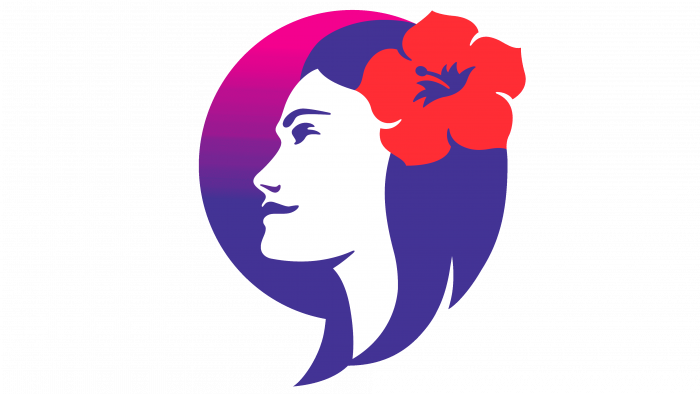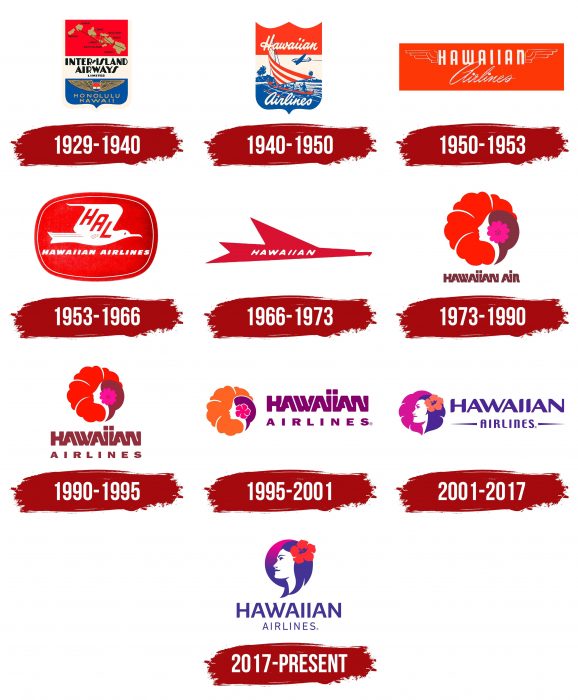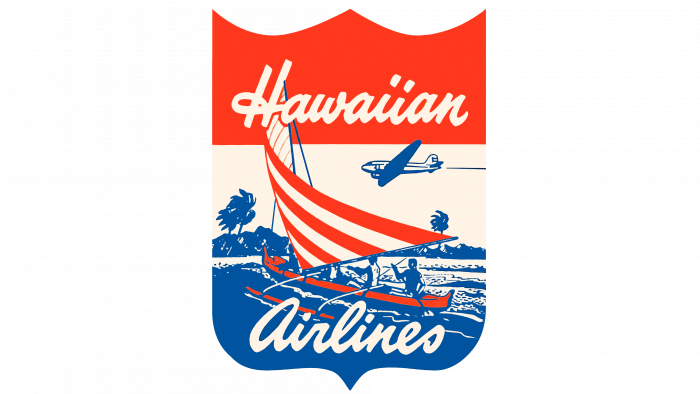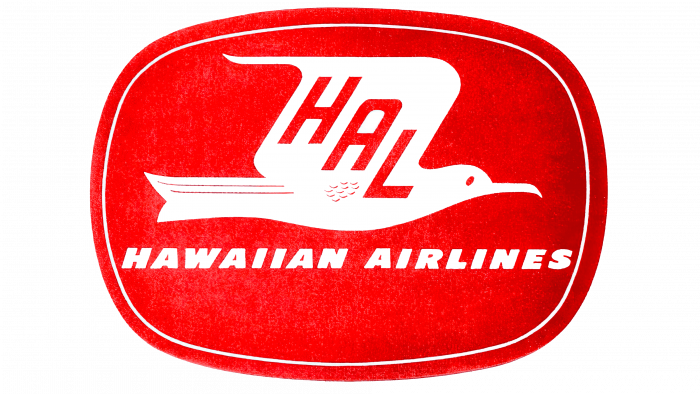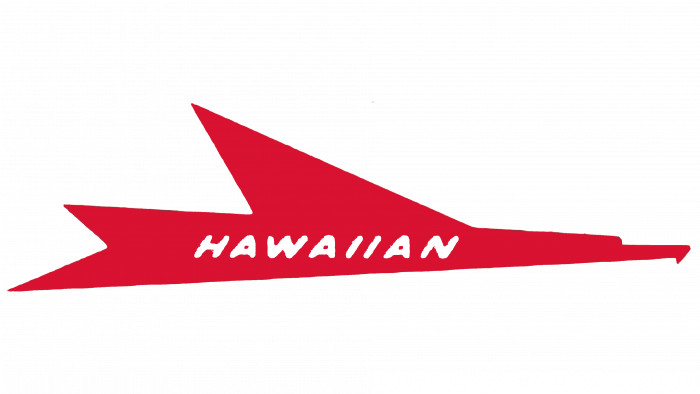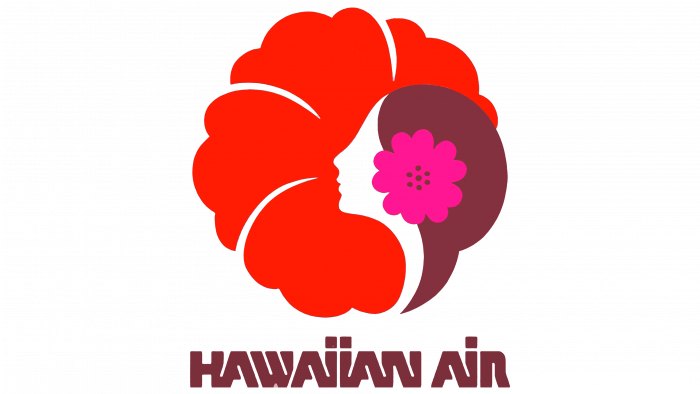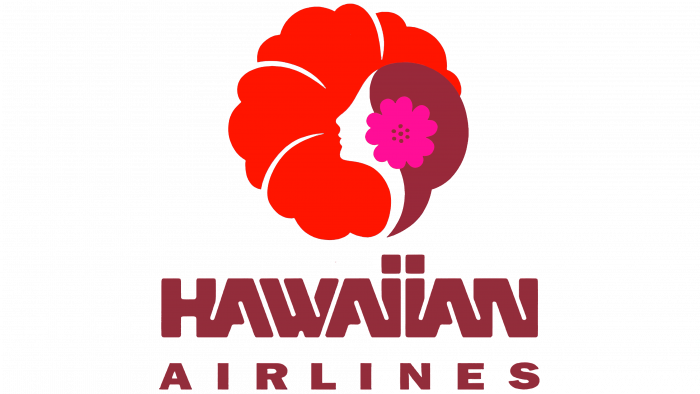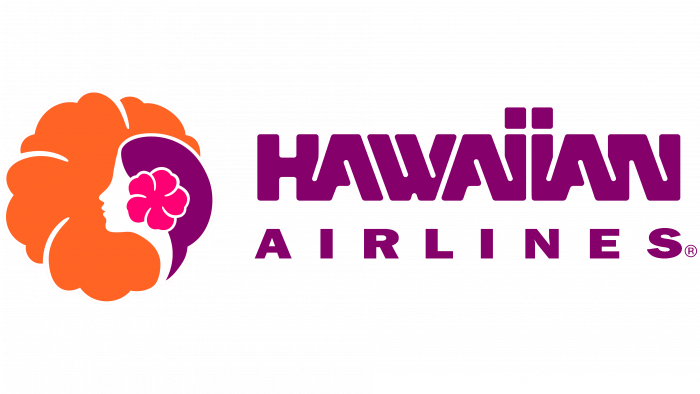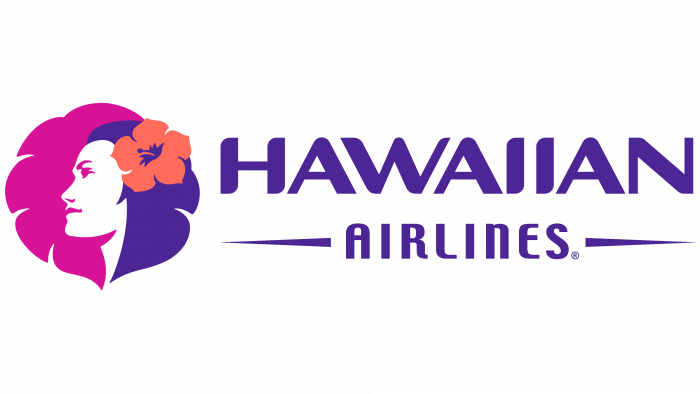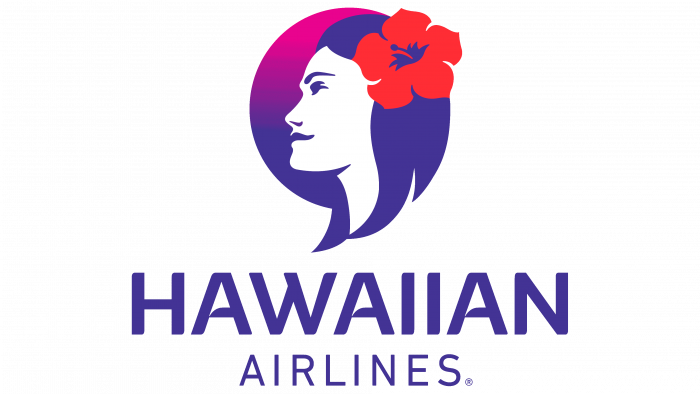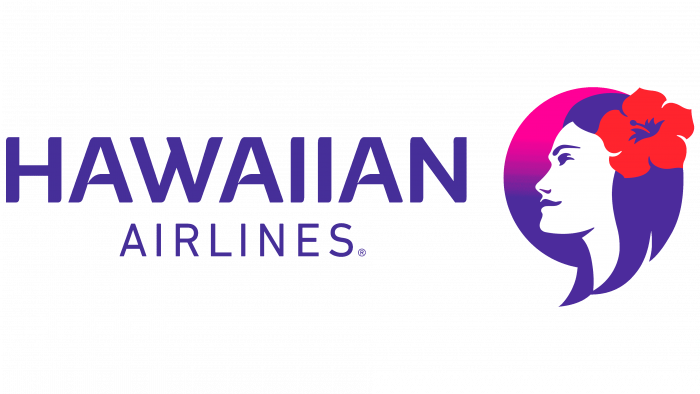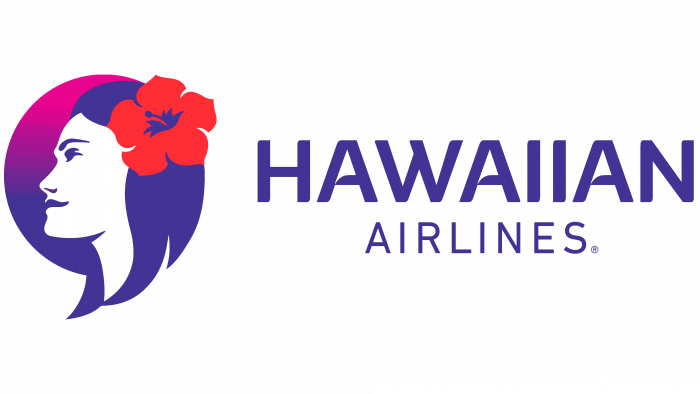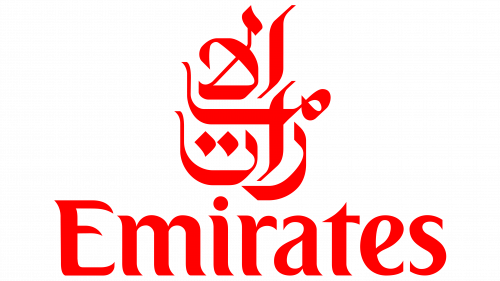The Hawaiian Airlines logo reflects the beauty and love of Hawaii. Long-distance flights can take travelers to unknown countries, but the heart will always call back. The emblem is filled with greatness and romance and calls for distant horizons.
Hawaiian Airlines: Brand overview
Hawaiian Airlines is the oldest American airline and has not suffered a fatal accident or loss of aircraft. He has the least problems with baggage, ticket refunds, and cancellation of flights. Moreover, the company is the largest in Hawaii. It is part of the structure of Hawaiian Holdings, Inc. Hawaiian Airlines has several of its bases – at the airports of Honolulu, Los Angeles, Maui, and Oahu, and is also close to the top ten largest commercial airlines in the United States. The aircraft flies to the mainland United States, New Zealand, French Polynesia, Samoa, Tahiti, Australia, Japan, and Asia. In total, the company has 32 directions.
The story begins on January 26, 1929, when Stanley Kennedy founded Inter-Island Airways Ltd., with roots tracing back to his father’s Inter-Island Steam Navigation Company.
November 11, 1929, saw the maiden flight of Inter-Island Airways, using a Sikorsky S-38 amphibious aircraft. The aircraft flew from Honolulu to Hilo, making stops at Molokai and Maui, and carried eight passengers.
The 1930s were a period of expansion, with the airline establishing regular routes between Hawaii’s major islands. This inter-island connectivity solidified its role in the archipelago’s transportation network.
Rebranding as Hawaiian Airlines on October 1, 1941, the brand continued to grow. During World War II, it played a crucial role in supporting military operations, conducting numerous charter flights for the U.S. armed forces.
The post-war era saw fleet modernization with the addition of Convair 340 and Douglas DC-6 aircraft in the 1950s, enhancing service capabilities.
Entering the jet age in the 1960s, the company introduced the Douglas DC-9 in 1966, significantly reducing travel time between islands and setting new standards for inter-island travel.
The brand took its first international steps in 1984, launching flights to Pago Pago, American Samoa. A year later, it expanded to the U.S. mainland, starting with the Honolulu-Los Angeles route.
The 1990s brought further growth, adding destinations like Las Vegas and Anchorage to the network. However, the early 2000s were challenging, and the company filed for Chapter 11 bankruptcy in 2003. Demonstrating resilience, the airline successfully reorganized and emerged from bankruptcy in 2005.
2008, the company began renewing its fleet, ordering new Airbus A330-200s to replace its aging Boeing 767s. This move began a new era of modern, efficient aircraft.
Asian expansion started in 2010 with flights to Tokyo and services to other Asian cities, significantly broadening the brand’s reach.
2013, the company unveiled a refreshed livery and logo to celebrate its cultural heritage and modern identity.
A notable addition to the fleet in 2017 was the Airbus A321neo, which facilitated the launch of new routes to the U.S. West Coast, enhancing connectivity.
The following year, the company ordered Boeing 787-9 Dreamliners to expand its international footprint further.
The airline has consistently earned accolades for punctuality and service quality throughout its history, solidifying its reputation as a leading U.S. carrier.
By 2020, the company connected over 30 cities across four continents, maintaining its status as a key player in transpacific travel and a beloved carrier in Hawaii.
Meaning and History
The current carrier’s predecessor is Inter-Island Airways, an Inter-Island Steam Navigation Company subsidiary. She was registered in January 1929 and began survey flights in October. Passenger service began in November of the same year, and a Sikorsky S-38 aircraft was used on the Honolulu-Hilo flight with transit landings in Molokai and Maui.
The organization received its current name in 1941 when it replaced the old ships with more advanced ones. The air fleet renewal required a rebranding for the emblem to take its place on the Douglas DC-3. Modern air transport was commissioned in 1952. It was the Convair 340. In the late 50s, older models appeared. In 1966, passengers began to be transported on a Douglas DC-9-10 jet aircraft, which halved the route time.
Simultaneously with the air fleet, the emblems also changed: they became more progressive, colorful, and accurate. The last update took place in early May 2017. Then, together with the logo, the company presented a new aircraft livery. Throughout Hawaiian Airlines’ history, it has had ten individual symbols.
What is Hawaiian Airlines?
It is the oldest airline in the United States and has never had a fatal plane crash in its history. It operates commercial flights to Hawaiian, connecting the state to the American mainland and a dozen other countries.
1929 – 1940
The logo in the colors of the American flag at the top shows a map showing the airline’s routes. Black lines and golden islands are on a red background. In the center, on a white stripe, is the inscription “Inter-Island Airways Limited,” denoting the first name of the carrier. The letters are large and wide, with an original curved “S” and a miniature dash of the same shape. At the bottom, on a blue substrate, there is a winged Aeroflot symbol with a miniature badge between the wings. Below is the location of the aircraft – “Honolulu Hawaii.” The logo is shaped like a heraldic shield with a white border.
1940 – 1950
After changing the name to Hawaiian Airlines, the company immediately changed its image and identity. For the new logo, the designers chose an image of an airplane flying along the coastline and over a sailboat with rowers. The designers have given the badge a more pronounced heraldic shield shape by making two indentations in the upper part. The inscriptions are now italic, coherent, and handwritten. They are arranged in two rows: the top is on a red background, and the bottom is on a blue background. However, there is no exact border between the colors because the logo looks like a whole picture, not a collection of separate elements.
1950 – 1953
The logo of these years is based on Aeroflot’s winged sign, which was present in the debut version. But this time, the wings are located to the right and left of the first word in the airline’s name, “Hawaiian.” The second part (“Airlines”) is below and is handwritten in coherent italics. All elements are enclosed in an orange rectangle.
1953 – 1966
The red oval depicts a white gull heading to the right. She replaced the winged sign. The abbreviation “HAL” is written on the bird’s wing, which decodes the full name of the air carrier. Below is the inscription “Hawaiian Airlines.” It is made in block letters in upper case with a slight slope to the right.
1966 – 1973
The developers have completely transformed the logo, leaving nothing of the familiar elements. Now, a red plane flaunts the logo against a white background. The word “Hawaiian” is written on the board in white letters.
1973 – 1990
1973, the legendary renaming took place: the company received the name Hawaiian Air. At the same time, the iconic emblem designed by Landor Associates was presented. Its code name is Pualani. The logo represents a red hibiscus flower, against which a girl is depicted in profile. She looks up, her head thrown back slightly, which indicates the connection between the logo and the theme of flights. The girl’s face is white; her hair is brown; the flower in her hair is deep pink. Several brown dots are visible in the center, forming an ornament. Below is the phrase “Hawaiian Air” in stylized letters. They are all connected except for the “W.”
1990 – 1995
The company returned the old name and replaced the inscription at the bottom, keeping the old style. The only difference is that now the name occupies not one but two rows. Another change has been made to the central part of the flower in the hair: instead of a dotted ornament, there is now a miniature star.
1995 – 2001
The developers have rearranged the elements of the logo. They placed the text behind the icon on the left and suggested a different color palette. Everything brown, the authors of the logo made dark purple, repainted the background hibiscus in yellow, and replaced the old flower in the hair with a new one – symmetrical, consisting of five petals.
2001 – 2017
In this version, all the elements are in their places but decorated completely differently. The girl’s head is detailed and slightly turned by her face. The eyes, nose, lips, and eyebrows are now clearly visible. Hibiscus is depicted in the hair, and the background flower has become non-specific and general. Changes also affected the lettering, as the designers abandoned the continuous style, separating each letter. The authors added two long, sharp lines to the bottom word. This version of the logo uses colors such as purple, blue, and red-orange.
2017 – today
The design has become more sophisticated and detailed. The hibiscus flower is now realistic. The background flower is replaced with a circle with a gradient color and looks more like the evening sun. The girl’s hair is elegantly styled, and her attentive gaze is directed upwards. The company name is located under the icon.
Hawaiian Airlines: Interesting Facts
Hawaiian Airlines, founded on January 30, 1929, as Inter-Island Airways, has grown from offering sightseeing tours over Oahu to becoming a major airline connecting Hawaii with the world.
- Beginnings: In 1929, it started providing air tours of Oahu and quickly expanded to scheduled flights between Honolulu, Maui, and the Big Island.
- Name Change: In 1941, it became Hawaiian Airlines, reflecting a broader mission to serve the Hawaiian Islands and beyond.
- Safety Record: It’s the oldest US carrier with no fatal accidents or hull losses, highlighting its dedication to safety.
- Growth: Originally focusing on inter-island service, it flies long-haul to Asia, Australia, New Zealand, the American mainland, and the Pacific islands.
- Innovation: In 1950, the first commercial flights with twin-engine Sikorsky S-38 planes were operated, demonstrating aviation innovation.
- Branding: Its livery features Pualani (Flower of the Sky), symbolizing its roots and the spirit of Hawaii. The branding emphasizes comfort and hospitality.
- Environmental Efforts: The airline invests in fuel-efficient aircraft and supports environmental projects, showing its commitment to sustainability.
- In-flight Service: Known for exceptional hospitality, it offers complimentary meals on trans-Pacific flights, which is rare among US carriers.
- Frequent Flyer Program: HawaiianMiles rewards passengers for flying with Hawaiian Airlines and its partners, enhancing customer loyalty.
- Cultural Engagement: It promotes Hawaiian culture and language, including Hawaiian language lessons on some flights and support for cultural festivals.
Hawaiian Airlines distinguishes itself in the aviation industry by blending a rich history with a strong commitment to safety, service, and Hawaiian cultural promotion.
Font and Colors
Modifications to the Hawaiian Airlines logo are associated with ongoing detailing. Therefore, the girl from the abstract became realistic. The number of flowers was also reduced: the developers left the hibiscus in the hair, and the background was completely removed, suggesting a gradient sun disk to replace it.
The writing style has evolved constantly. The logo had different inscriptions – from coherent italics to single letters. In one version, the characters were fused; in the other, they were printed with a slight slant to the right. Now, an individual font is used, which has no analogs. The signature palette has always included shades that form purple: red, blue, and pink, which are still present in the emblem.”
FAQ
What is the flower in the Hawaiian Airlines logo?
The logo, added in 1973, includes a red hibiscus known for its vibrant color and beauty. It includes a silhouette of a girl named Pualani, which means “sky flower” in Hawaiian. The red hibiscus is important because it is part of the native flora and has cultural significance in Hawaii.
What star is Hawaiian Airlines?
They are a 3-star Skytrax-certified airline. This rating reflects the quality of airport services, onboard products, and staff service. It considers seat comfort, food and beverages, in-flight entertainment, and crew professionalism.
A 3-star rating means the brand provides a competent level of service with good amenities. Although it is less luxurious than higher-rated companies, passengers can expect a reliable and comfortable journey.
Who is the Hawaiian Airlines logo?
The logo features the head of a girl named Pualani, which means “Flower of the Sky” in Hawaiian. Pualani embodies the spirit and hospitality of Hawaii, serving as the brand’s welcoming symbol. The design highlights the airline’s deep roots in Hawaiian culture and its commitment to sharing the spirit of the islands with the world.
Who is the face of Hawaiian Airlines?
The company’s face is Pualani. Her name means “flower of the sky” in Hawaiian. She embodies the welcoming spirit and rich cultural heritage of the islands. This image resonates with locals and travelers alike, reflecting the genuine warmth and spirit of aloha that the brand strives to convey to every passenger. This figure helps the brand stand out by showcasing its unique Hawaiian roots.
What font does Hawaiian Airlines use?
The airline uses a unique typographic style in its branding. The word “HAWAIIAN” is in a custom sans-serif font that resembles Linotype Finnegan Small Caps Medium and FF Signa Round Pro Bold. This gives the brand a modern and friendly feel.
The term “Airlines” is written in a simpler sans-serif font, similar to Embarcadero MVB SC or DIN Next Cyrillic Regular. This font complements the main heading, making it easier to read while maintaining a clean and professional look. This choice of fonts creates a distinctive visual identity for the airline, increasing brand awareness and distinguishing it in the aviation market.
How many planes does Hawaiian Airlines have?
As of July 2021, the fleet comprised 60 aircraft, including Airbus and Boeing models. These aircraft meet the requirements of both domestic and international flights. The brand uses aircraft types that best suit the needs of its routes, especially those connecting the Hawaiian Islands with other parts of the United States and international destinations in the Asia-Pacific region.
This fleet composition allows the company to manage its flights, ensuring passenger comfort and operational reliability. With 60 aircraft, the airline can handle large traffic volumes while maintaining a schedule that provides frequent flights to major tourist hubs.
